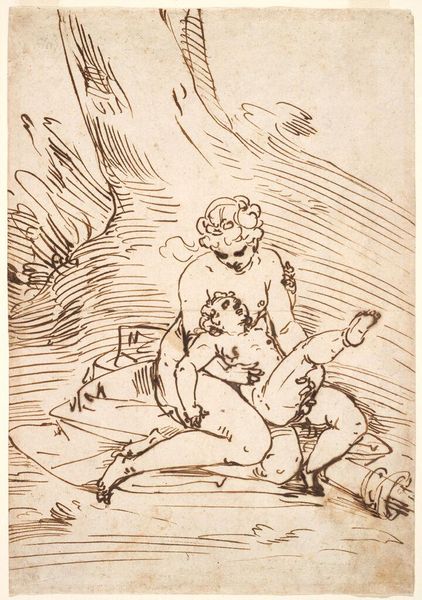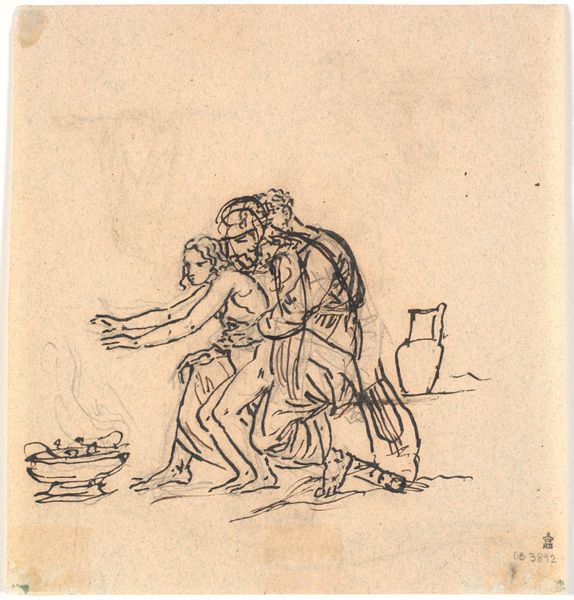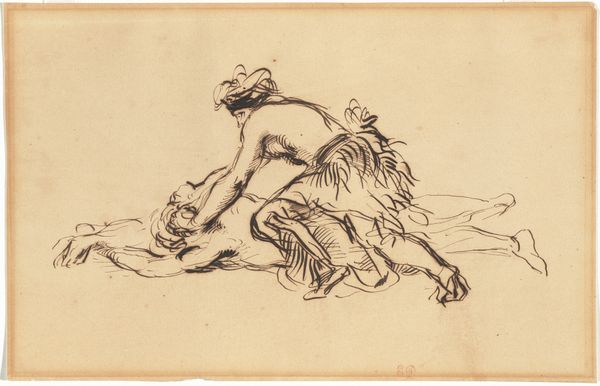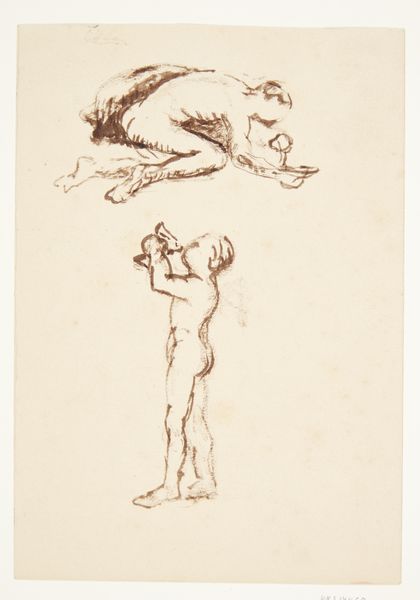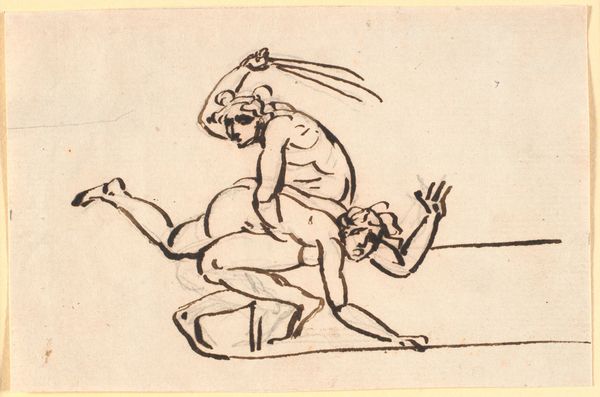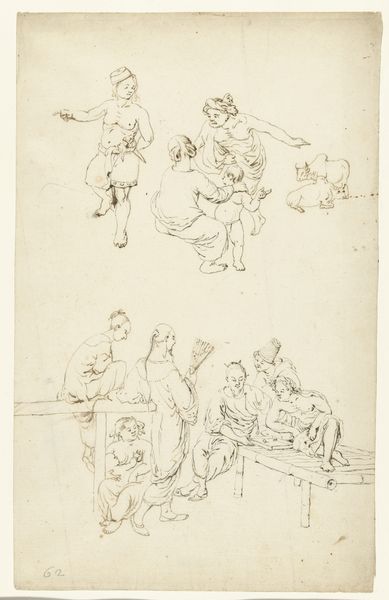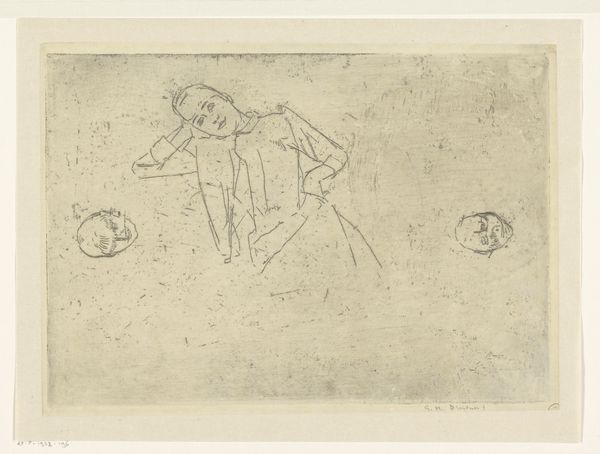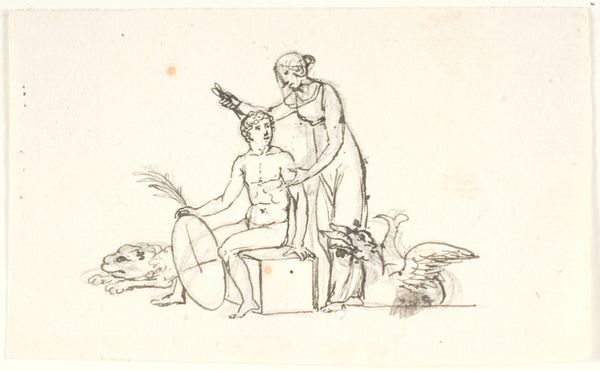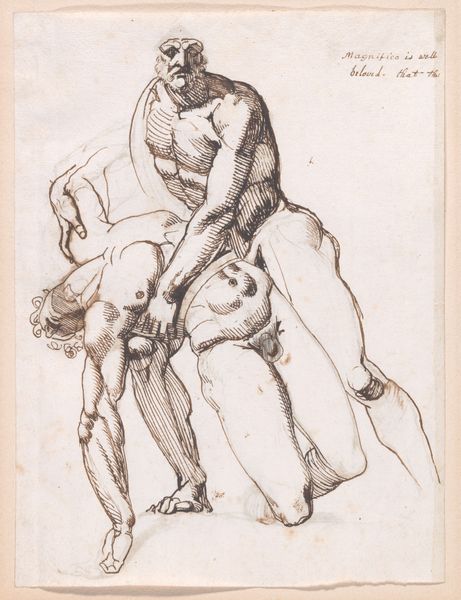
drawing, print, paper, ink, chalk, pen
#
portrait
#
drawing
# print
#
paper
#
ink
#
chalk
#
pen
Dimensions: 140 × 127 mm
Copyright: Public Domain
Curator: Here we have George Romney’s "Seated Man and Woman," a drawing employing pen, ink, and chalk on paper. It’s currently held at the Art Institute of Chicago. Editor: Immediately, I'm struck by the sketch-like quality. It feels very intimate and unfinished, as though we're glimpsing a private moment or an initial idea. The loose linework adds to that sense of immediacy. Curator: Exactly! The medium itself plays a vital role. The rawness of the materials—the way the ink bleeds slightly, the texture of the paper showing through—emphasizes the labor and the process involved. It bridges high art, this subject, with the everyday craft of drawing and sketching. We become acutely aware of the hand that created it. Editor: I agree. And what kind of a hand was it? The figures, especially the woman seated on the ground, feel emotionally weighted. Is this a depiction of servitude, dependency perhaps? The positioning, the man above and the woman below, certainly suggests a power dynamic worth unpacking, a possible visual hierarchy reflecting societal norms. Curator: Absolutely, but think about the role of academies and the patronage system at the time. The ready availability of materials affected production. Was this produced as part of a larger body of work? Did the social context, like prevailing views on the female form, play a role in how Romney represented his sitters? Editor: It has to. Representation always implicates a broader set of power dynamics. Even the seemingly unfinished quality can be read as a comment on the disposable nature of women’s work or an early study to further reinforce societal notions about gender and status at that time. Curator: I appreciate how you are situating it within those broader contexts, emphasizing gender, status, and potential economic precarity. The print-making medium allows these interpretations to spread quickly. The reproduction and accessibility contribute further to circulating and confirming norms within the popular discourse. Editor: It does prompt such important questions around its making and reception. Looking again, there’s a haunting quality despite the informality. Thank you for shedding light on the materiality, reminding me that even what seems like a fleeting sketch has deep social roots. Curator: And thank you for underscoring how it speaks to enduring issues around power and representation, allowing us to draw vital lines between art and society.
Comments
No comments
Be the first to comment and join the conversation on the ultimate creative platform.
